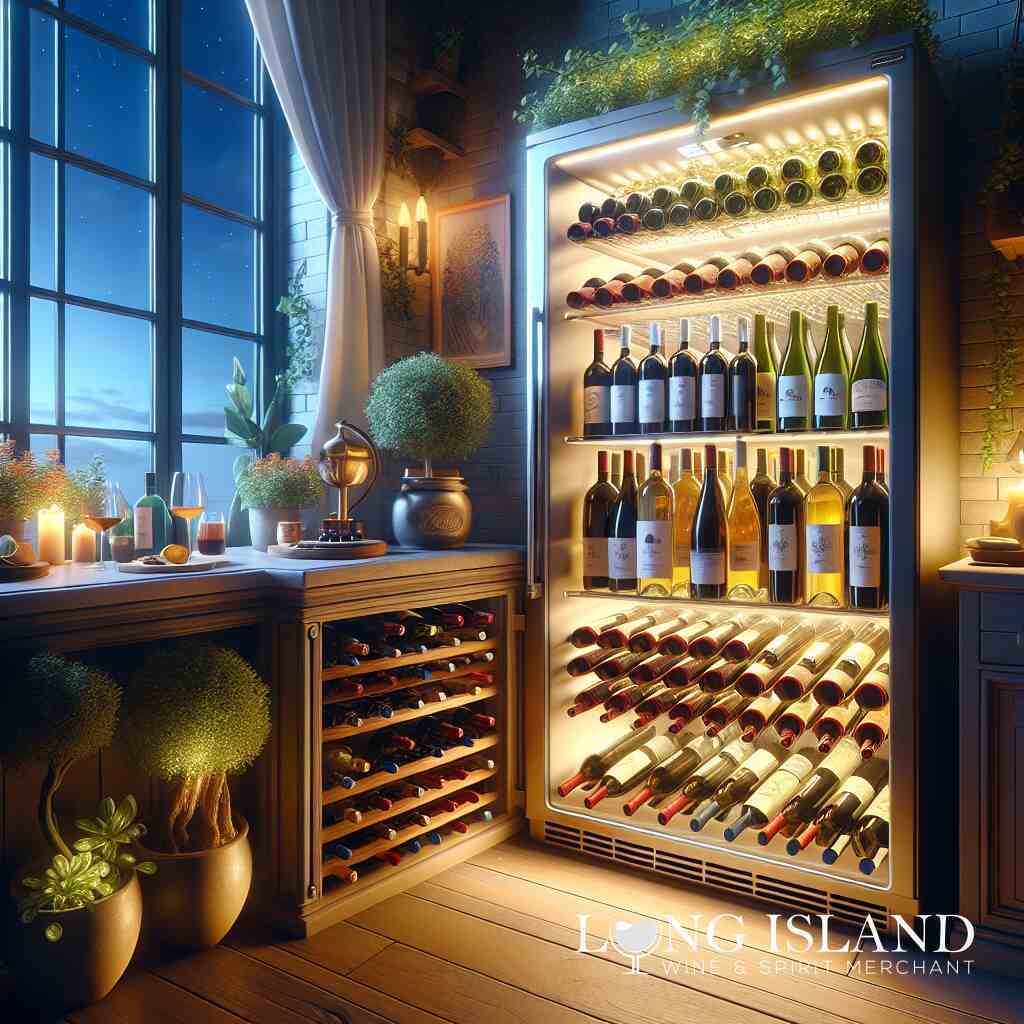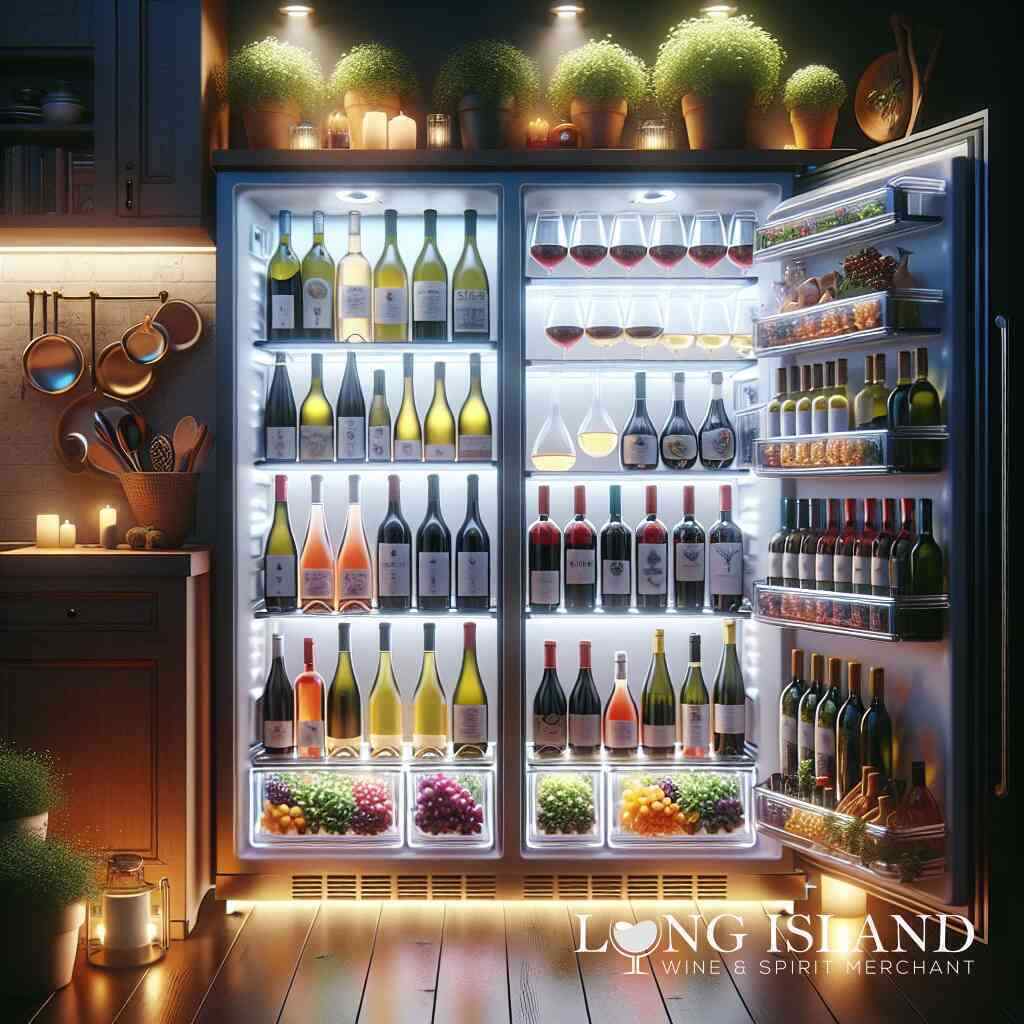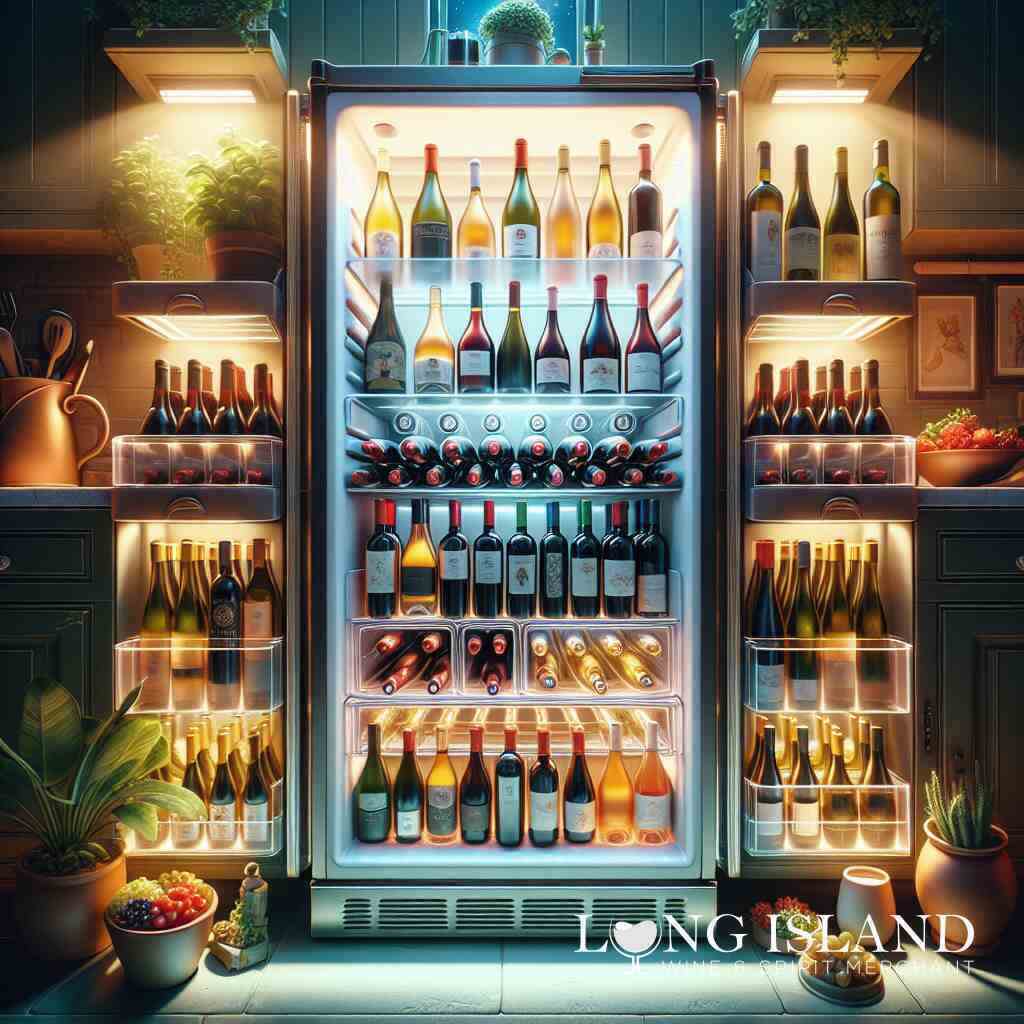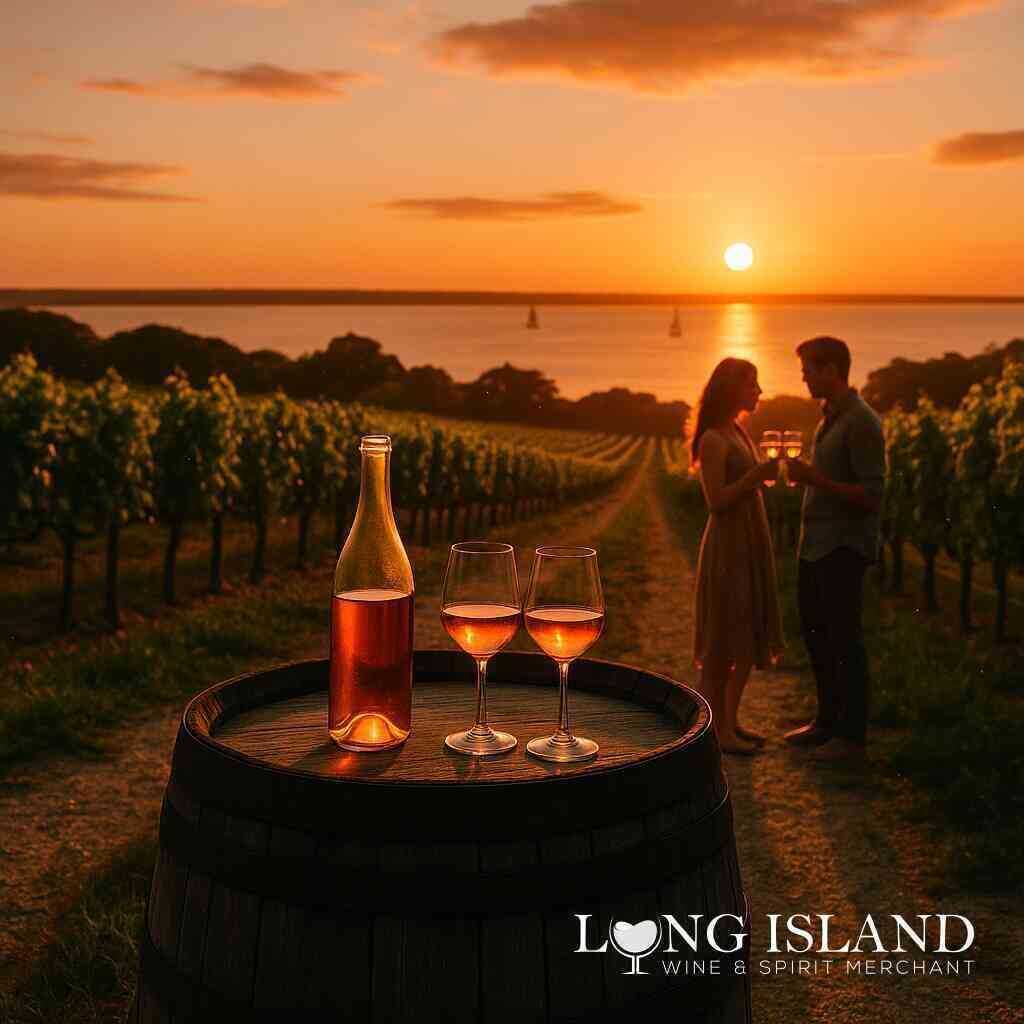
How Long Does Wine Last in the Fridge?
September 26, 2024
Introduction to Wine Preservation
Importance of Storing Wine Correctly
Proper storage is fundamental to maintaining the quality and longevity of your wine. Whether you are a casual consumer or a connoisseur, knowing how to preserve your wine can significantly enhance your drinking experience. Preservation is not only about maintaining flavor but also about protecting the wine from factors that could lead to premature aging or spoilage. Incorrect storage can lead to a flat taste or an altered bouquet, which detracts from the wine’s intended profile.
How Proper Storage Extends Wine’s Lifespan
Adhering to optimal storage practices can significantly prolong your wine’s lifespan. Factors like temperature, exposure to light, humidity, and air exposure play significant roles in the aging process of wine. The wine storage methods you choose can either preserve the wine’s inherent qualities or adversely affect its overall taste and longevity. Keeping your wine in a relaxed, dark, slightly humid environment will help maintain its character and complexity over time.
Overview of Different Wine Types, Including Rose, Sweet Red, and White Wines
Different types of wines require slightly varying storage tactics. Rose wines, for instance, with their delicate flavor profiles, benefit significantly from refrigeration, which helps maintain their freshness and vibrant color. Sweet red wines, which often contain higher levels of sugar, need careful storage to prevent fermentation anomalies, whereas white wines generally require consistent cool temperatures to retain their crisp aromas and acidity. Each type of wine interacts uniquely with environmental variables, making knowledge about your specific bottle crucial for ideal storage and consumption.
Understanding the Basics of Wine Storage
Ideal Storage Conditions for Wine
Proper storage conditions are paramount to preserve the full spectrum of flavor and extend the lifespan of wine. A crucial aspect is maintaining a stable temperature, typically between 45°F and 65°F, with the optimal range narrowly centered around 55°F. This cooler temperature helps slow down metabolic processes, including aging and oxidation, that can prematurely spoil the wine.
Moreover, the humidity level should ideally hover around 70%. This prevents the cork from drying out and allows it to maintain its elasticity, thereby ensuring a tighter seal. This prevents air from entering the bottle, which can accelerate the degradation of the wine. Vibration from appliances or heavy traffic can also disturb sediment in wines, potentially leading to unwanted chemical reactions that might alter the taste. Thus, a calm, vibration-free environment is also beneficial.
Role of Temperature and Light in Wine Preservation
Temperature plays a dual role in preserving wine and preparing it for consumption. Constant fluctuations in temperature can cause the wine to expand and contract, leading to air seepage around the cork, which can introduce bacteria and cause spoilage. Moreover, temperatures that are too high can lead to ‘cooked’ flavors, where the wine may taste flat and lose its vibrant profile. Explore the detailed impacts of wine refrigeration for a deeper understanding of temperature roles.
Light, especially sunlight, can be detrimental due to UV rays, which can degrade and prematurely age wine. Even artificial light can impact the chemicals within the wine, which is why wine is typically bottled in colored glass and stored in dark places. Exposure to excessive light can lead to the development of an undesirable aroma, often compared to wet cardboard or stale nuts, which is a clear sign of spoilage.
Wine Oxidation and Its Effects
Wine oxidation occurs when wine is exposed to air, leading to chemical reactions that alter the flavor and color of wine. Minor exposure to oxygen managed correctly, can help develop complexity in wine, a process often utilized during barrel aging. However, once a bottle is opened, oxidation can quickly become detrimental if not controlled.
The effects of oxidation can be pretty noticeable. White wines may take on a darker, more amber tone, while reds may lose some of their vibrant hues, turning a brownish color. Flavor-wise, oxidized wines often acquire a flat taste or can lean towards nutty, bruised fruit flavors that are generally not expected or desired.
To mitigate oxidation, especially after opening, reducing the surface area of wine exposed to air is critical. This can be achieved by transferring wine to smaller containers, using wine preservers that displace or remove air in the bottle, or even refrigerating wine promptly and tightly sealing it. Seeking expert advice on wine oxidation can guide you in handling this common wine issue effectively.

How Long Can You Keep Wine in the Fridge?
Red Wine Fridge Time
When it comes to red wine, the spectrum of preservation in your fridge varies. Typically, an opened bottle of red wine can last between three to five days under optimal refrigeration. This duration ensures that the wine maintains its character without the emergence of undesirable sour flavors that can arise when stored improperly outside of the refrigerator. Red wines are often not refrigerated by many, but doing so can actually retard the process of oxidation and spoilage. For those special bottles from your collection at Long Island Wine & Spirit Merchant, ensure they find their temporary home in a cool, dark corner of your refrigerator to preserve their noble flavors.
White Wine Fridge Lifespan
White wines, recognized for their crisp and refreshing acidity, can be a bit more resilient when stored in the fridge. With proper refrigeration, an opened bottle of white wine can delight your palate for about three to seven days. Refrigeration helps maintain its vibrant acidity and aromatic profile, which are crucial for the overall tasting experience. Whether it’s a dry white wine or a lush, aromatic variant from our shelves, keeping it chilled will extend its life and your enjoyment.
Sparkling Wine and Rose Wine Refrigeration Specifics
Sparkling and rosé wines demand particular attention in terms of refrigeration. Sparkling wines, due to their carbonation, need to be consumed within one to three days once opened to maintain their iconic fizz. Use a sparkling wine stopper to maintain carbonation levels and prevent it from going flat. On the other hand, rosé wines, which combine the characteristics of red and white wines, typically last in the refrigerator for about three to five days with proper sealing after opening. By storing these wines at the consistent, cool temperatures provided by a fridge, you’re helping to retain their delicate flavor profiles and beautiful coloration.
Impact of Opening a Bottle on its Lifespan
Opening a bottle of wine introduces oxygen into the environment within the bottle, which can accelerate the process of oxidation, leading to potential spoilage. Once the bottle is open, its lifespan is contingent on how well it is resealed and refrigerated. Techniques like using vacuum-sealed caps or transferring the remaining wine to a smaller bottle can help extend the freshness of the wine. Exploring advanced wine refrigeration solutions considering the atypical and typical interactions between your wine and the environment will facilitate better preservation post-opening. Thus, minimizing oxygen exposure and maintaining steady refrigeration conditions is vital to prolonging the delightful experience your wine can offer.
Advanced Tips to Maximize Wine Freshness
Wine Fridge Storage Guide
Proper storage of wine in a fridge is not just about achieving the right temperature; it also involves placing bottles in positions that minimize exposure to movement and light. For optimal conditions, wines should be stored horizontally to keep the cork moist, thus preventing it from drying out and letting air inside the bottle. Furthermore, if your fridge has a fan, you might want to reconsider the way bottles are oriented to avoid direct air exposure on the cork. Extending wine freshness is crucial, and storing your bottles in a dedicated wine fridge can make a significant difference. This preserves both the quality and taste of the wine by maintaining a consistent environment tailored to the unique needs of different wine types.
Tips for Chilling Wine Properly
Chilling wine is an art that enhances the wine’s natural flavors and aromas. The general rule of thumb is to chill white wines for about two hours in the fridge before serving, while sparkling wines benefit from being chilled for at least three hours. Red wines generally need to be chilled for about 45 minutes to an hour to reach their optimal temperature. To speed up the chilling process without compromising the integrity of the wine, consider placing your bottle in ice water with a dash of salt, which lowers the freezing point of water and chills the wine more efficiently. Always remember that selecting the appropriate temperature for wine preservation not only optimizes taste but also safeguards against premature aging.
Storing Open Wine Bottles to Extend Freshness
Once opened, a bottle of wine begins to oxidize, which can quickly degrade its quality. To extend the life of your opened wine, re-cork it after every pour, minimizing oxygen exposure. Advanced tools like wine stoppers and vacuum pumps can further reduce oxygen exposure and preserve your wine’s character and flavor for an extended period. It’s also beneficial to store opened wine bottles in the fridge, even red wines, to slow down the oxidation process. If you frequently have leftover wine, consider investing in smaller bottles for storage purposes. This practice limits the air space over the wine in the bottle, helping to retain the wine’s freshness longer.
Selecting the Right Wine Fridge for Home Use
Choosing a suitable wine fridge can dramatically enhance your wine experience by ensuring each bottle is kept under ideal conditions. When selecting a wine fridge, consider one that offers dual-zone or multiple temperature settings to cater to both white and red wines. Also, look for fridges with UV-protected glass doors to shield wines from light exposure. The capacity is another important factor; ensure your fridge can accommodate your collection as it grows. Lastly, consider the humidity control features since proper humidity levels prevent corks from drying out, providing a tighter seal against oxidation. Educating yourself on the best practices for home wine refrigeration can guide you in making an informed purchase that suits your needs and those of your wine collection.

Conclusion and Next Steps
Recap of Key Points
Throughout this detailed exploration of wine preservation, we’ve covered the pivotal role that proper storage plays in extending longevity and maintaining the quality of your favorite wines. From the crucial influence of temperature and light to the detrimental effects of improper refrigeration, each aspect of wine storage has its importance. We’ve detailed that red, white, and rosé wines can optimally last between three and five days in the fridge once opened, provided that they’re stored under the right conditions using wine fridge lifespan tips, a pivotal insight for anyone looking to extend their wine’s vitality.
Encouraging Proper Wine Storage Practices
To truly savor the breadth of flavors your wine has to offer, adhering to the best practices in storing wine at home is essential. This includes maintaining a constant temperature, preventing exposure to light, and minimizing oxidation by promptly and adequately resealing opened bottles. Exploring advanced wine storage solutions further can elevate your wine experience by ensuring that each sip is as intended by the vintner. For those looking to implement top-tier wine care, consider storing your wines in specialized fridges designed for wine storage, where conditions are meticulously controlled to preserve the wine’s delicate nuances.
Invitation to Explore Long Island Wine & Spirit Merchant’s Selection
At Long Island Wine & Spirit Merchant, located in the heart of Commack, New York, our devotion to fine wine and good spirits illuminates our curated selections-each designed to enchant your palate. Whether you’re a seasoned enthusiast or a budding connoisseur, our extensive range of rose, sweet red, and white wines, alongside our exquisite liquor offerings, ensures a match for every taste and occasion. We invite you to explore our wine storage solutions in Commack, which are adept at keeping your cherished bottles in pristine condition. Begin your journey into the world of fine wines and spirits with us, where every bottle tells a story of heritage, flavor, and the art of winemaking. Visit Long Island Wine & Spirit Merchant for an unmatched selection and personalized service that aims to heighten your wine experience. Whether in-store or through our convenient alcohol delivery option, discover and enjoy the profound pleasures of well-preserved, top-quality wines from around the globe.
Frequently Asked Questions
Question: What are the ideal refrigeration practices for extending the fridge lifespan of different types of wine?
Answer: At Long Island Wine & Spirit Merchant, we recommend specific refrigeration practices to extend your wine’s freshness and taste. For red wines, maintaining a steady fridge temperature between three to five days ensures the wine preserves its noble flavors. White wines and rosés, on the other hand, should be kept for about three to seven days for whites and three to five for rosés to maintain acidity and freshness. Sparkling wines are best enjoyed within one to three days to preserve their effervescence. Properly resealing the wine and storing it in a dedicated wine fridge are essential steps in maintaining the ideal condition of your wines.
Question: How does Long Island Wine & Spirit Merchant ensure the quality of wine through their alcohol delivery services?
Answer: Long Island Wine & Spirit Merchant prides itself on efficiently and safely delivering top-quality wines and spirits to your doorstep. Our alcohol delivery services ensure that each wine remains in optimal storage conditions during transit. Wines are packaged in secure, temperature-controlled environments to prevent exposure to damaging variables like extreme temperature and light, ensuring that every bottle delivered mirrors the condition it left in our store in Commack, New York. Our commitment to fine wine and good spirits ensures that each order meets high standards for quality and satisfaction.
Question: In the blog ‘How Long Does Wine Last in the Fridge?’, there’s a mention of using a wine fridge. What should one look for when selecting a wine fridge for home use?
Answer: Selecting a suitable wine fridge is crucial for enhancing your wine preservation efforts. At Long Island Wine & Spirit Merchant, we recommend looking for a refrigerator that offers dual-zone or multiple temperature settings to cater to both red and white wines appropriately. UV-protected glass doors are beneficial to protect the wine from light exposure. Additionally, consider fridges that provide adjustable humidity controls, essential for keeping the cork in perfect condition to prevent air from seeping into the bottle. Capacity should also match your collection size, ensuring your wine investment is scalable as your collection grows.
Question: What are some advanced tips for storing open wine bottles to maximize their shelf life?
Answer: Advanced tips for storing open wine bottles include re-corking the wine promptly after every use to minimize oxygen exposure, which is essential for maintaining the wine’s integrity and flavor. Using tools like wine stoppers and vacuum pumps can significantly reduce the wine’s contact with air, further extending its freshness. At Long Island Wine & Spirit Merchant, we also suggest refrigerating all opened wines, even reds, to slow the oxidation process. For those who frequently find themselves with leftover wine, consider transferring the wine into smaller bottles, which helps limit the air space over the wine, keeping it fresh longer.
Question: Can you explain the role of temperature and humidity in the preservation of wine?
Answer: Temperature and humidity play pivotal roles in wine preservation. The ideal temperature for storing wine should be stable, generally between 45°F and 65°F, with 55°F being optimal. This range helps slow down aging processes like oxidation, which can deteriorate the wine’s quality. Humidity should be maintained at around 70% to keep the cork elastic and prevent it from drying out. At Long Island Wine & Spirit Merchant, we recommend that a consistent, appropriate level of humidity prevents the cork from shrinking and allowing air into the bottle, which can spoil the wine.



